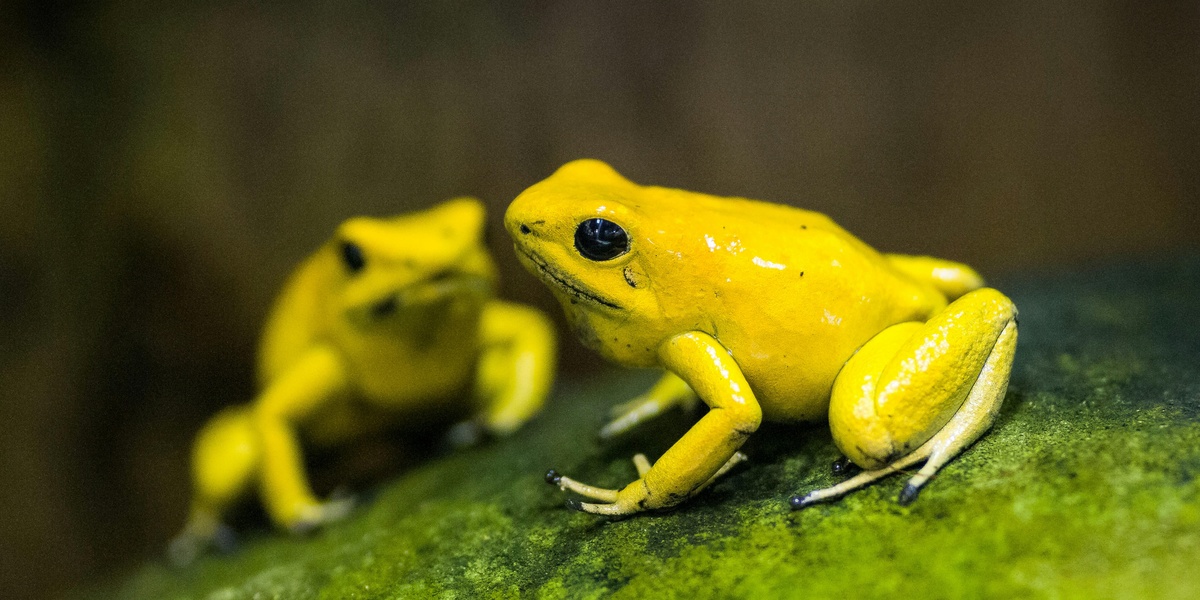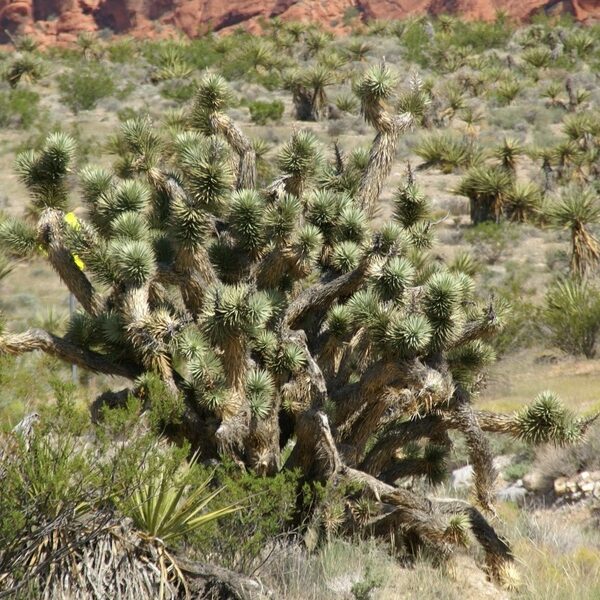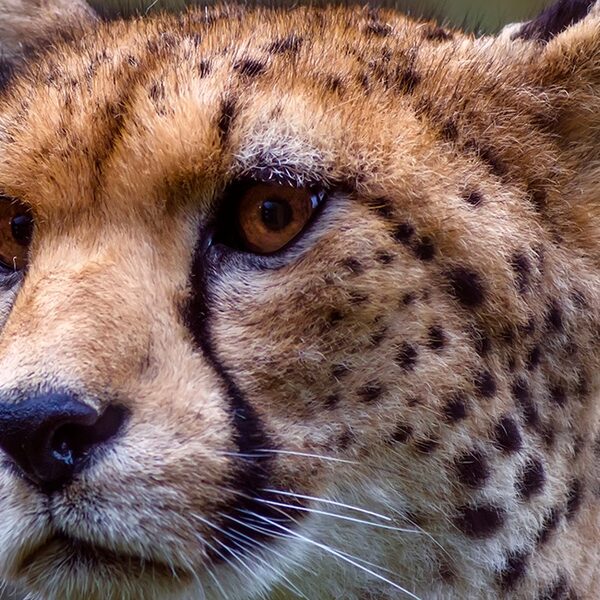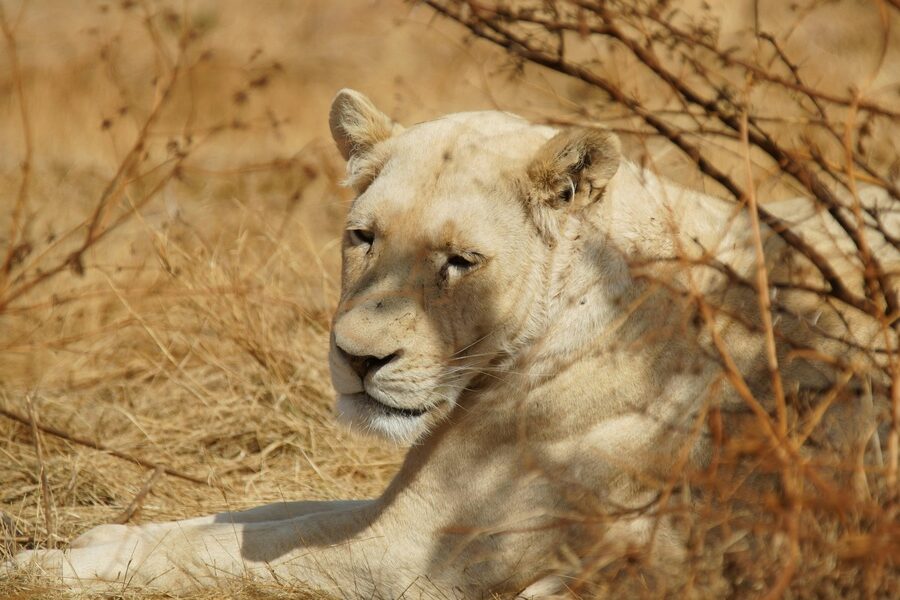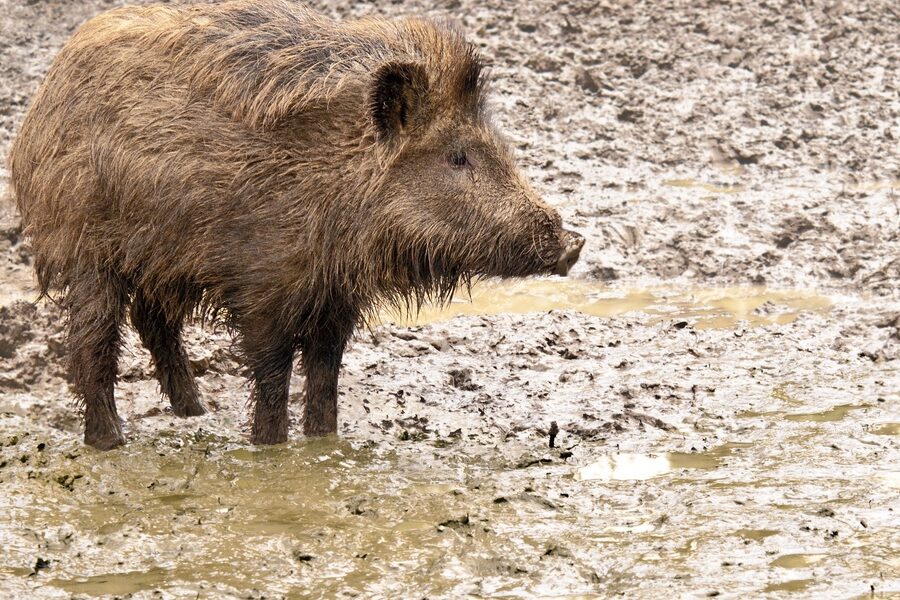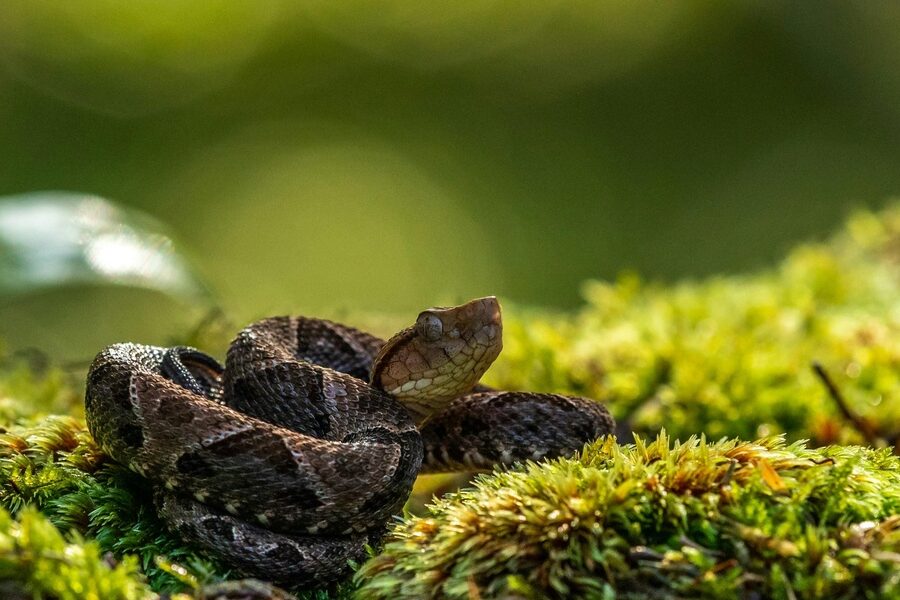Across habitats from sun-baked deserts to leafy wetlands and suburban gardens, yellow-colored creatures turn up where you least expect them. Bright hues can warn predators, lure prey, or help an animal blend in, so knowing which local species pose real risks is practical whether you’re hiking, working outside, or watching wildlife.
There are 25 dangerous yellow animals, ranging from Arizona bark scorpion to Yellow-bellied toad; for each species I list a concise row with Scientific name,Danger type (max 15 words),Range — you’ll find below.
How can I tell if a yellow animal is actually dangerous?
Watch behavior and features: defensive postures, spines, fangs, or bright aposematic patterns often signal risk. Consider habitat and activity (nocturnal scorpions vs. daytime frogs), avoid handling, photograph from a safe distance, and check local field guides or reputable apps to confirm identity.
What should I do if bitten or stung by a yellow animal?
Move to a safe area, stay calm, wash the wound if superficial, limit movement, apply a cold pack for swelling, and seek medical help promptly for scorpion stings, severe bites, or systemic symptoms; if possible, note or photograph the animal for identification.
Dangerous Yellow Animals
| Name | Scientific name | Danger type (max 15 words) | Range |
|---|---|---|---|
| Yellow jacket | Vespula spp. | Stinging — painful venom, allergic risk | North America, Europe, Asia |
| Asian giant hornet | Vespa mandarinia | Stinging — potent venom, can cause mass attacks and anaphylaxis | East Asia; recent detections in North America |
| European paper wasp | Polistes dominula | Stinging — painful stings, allergic reactions possible | Europe; introduced to North America |
| Eastern coral snake | Micrurus fulvius | Venomous — neurotoxic bite can be life-threatening | Southeastern United States |
| Yellow-banded poison dart frog | Dendrobates leucomelas | Poisonous — skin alkaloids toxic if ingested or introduced to wounds | Northern South America (Venezuela, Brazil, Guyana) |
| Golden poison frog | Phyllobates terribilis | Poisonous — batrachotoxin extremely potent, can be lethal | Pacific coast of Colombia (Chocó) |
| Bicolored poison frog | Phyllobates bicolor | Poisonous — potent skin alkaloids | Colombia, Panama |
| Yellow anaconda | Eunectes notaeus | Constriction — large constrictor capable of overpowering large prey | South America (Argentina, Paraguay, Brazil, Bolivia) |
| Gila monster | Heloderma suspectum | Venomous — painful, systemic venomous bite | Southwestern United States, Mexico |
| Mexican beaded lizard | Heloderma horridum | Venomous — painful venomous bite causes systemic symptoms | Mexico to Guatemala |
| Deathstalker scorpion | Leiurus quinquestriatus | Venomous — neurotoxic venom can be fatal in vulnerable people | North Africa, Middle East |
| Arizona bark scorpion | Centruroides sculpturatus | Venomous — neurotoxic venom causes intense pain and systemic signs | Southwestern United States, northern Mexico |
| Stonefish | Synanceia verrucosa | Venomous — extremely painful spines; envenomation can be fatal | Indo-Pacific coral and rocky reefs |
| Yellow boxfish (juvenile) | Ostracion cubicus | Toxic secretion — mucus toxin harmful to fish, risky if handled | Indo-Pacific reefs (juveniles bright yellow) |
| Golden puffer | Arothron meleagris | Poisonous — tetrodotoxin present if consumed | Tropical Indo-Pacific, Hawaii |
| Yellow-bellied sea snake | Hydrophis platurus | Venomous — potent elapid venom (highly toxic) | Tropical oceans worldwide (pelagic) |
| Banded sea krait | Laticauda colubrina | Venomous — potent neurotoxic venom; generally non-aggressive | Indo-Pacific coastal waters |
| Belcher’s sea snake | Hydrophis belcheri | Venomous — among the most potent sea snake venoms known | Indo-Pacific coastal waters |
| Golden moray eel | Gymnothorax miliaris | Biting — powerful jaws, can cause deep wounds and infection | Western Atlantic, Caribbean reefs |
| Pacific sea nettle | Chrysaora fuscescens | Stinging — painful nematocyst stings causing burns and systemic symptoms | Northeastern Pacific Ocean |
| Desert centipede | Scolopendra polymorpha | Venomous — painful bite with local and sometimes systemic effects | Southwestern United States, Mexico |
| Yellow crazy ant | Anoplolepis gracilipes | Biting/stinging — painful bites, formic acid spray; ecological devastation | Tropical islands, Pacific regions, Australia |
| European hornet | Vespa crabro | Stinging — large wasp with painful sting; allergic risk | Europe, parts of Asia; introduced elsewhere |
| Textile cone snail | Conus textile | Venomous — conotoxins can cause paralysis and death | Indo-Pacific shallow reefs and sands |
| Yellow-bellied toad | Bombina variegata | Poisonous — skin secretions irritant and toxic if ingested | Central and Southern Europe |
Images and Descriptions
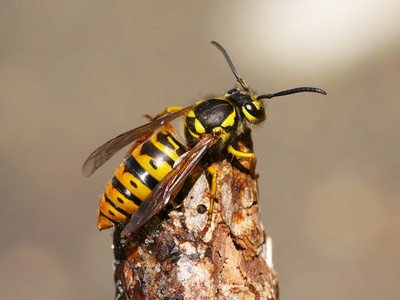
Yellow jacket
Common black-and-yellow social wasps that deliver multiple painful stings and can trigger life-threatening allergic reactions; nests near human activity. Avoid nests and wear protection; seek medical care for severe reactions.
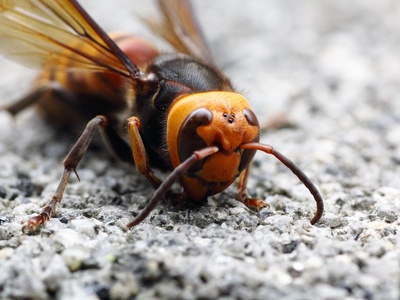
Asian giant hornet
Large hornet with a yellow/orange head and powerful sting; several stings can be medically serious. Do not approach nests; call professionals to remove them.
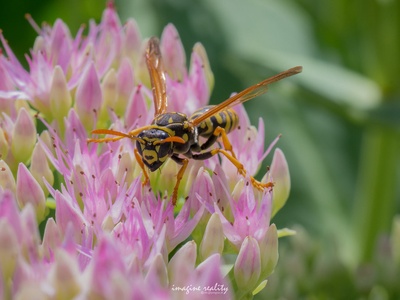
European paper wasp
Common yellow-and-black paper wasp that nests on buildings and eaves. Single stings are painful and repeated attacks can be dangerous to allergic people. Keep distance and avoid nest disturbance.
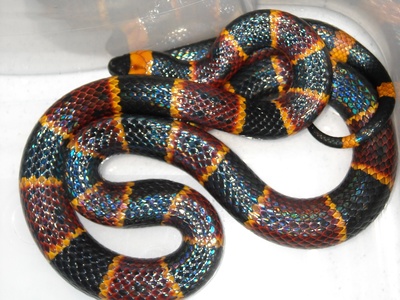
Eastern coral snake
Red, black and yellow-banded elapid with a potent neurotoxic bite. Generally reclusive but dangerous if handled. If bitten, seek emergency medical care immediately for antivenom and monitoring.
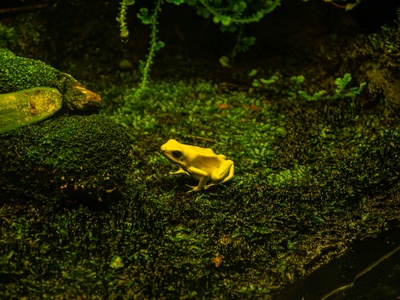
Yellow-banded poison dart frog
Bold yellow-and-black frog used traditionally for poisons on darts. Its skin alkaloids are harmful; do not handle or keep wild specimens without proper precautions.
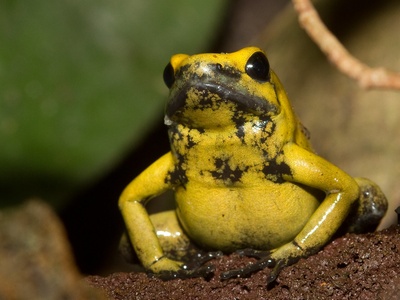
Golden poison frog
One of the world’s most toxic frogs, often bright golden yellow; a tiny amount of skin toxin can be fatal. Never touch or attempt to keep without specialist knowledge.
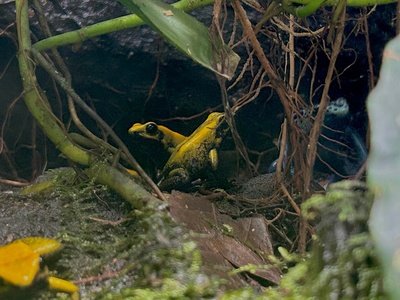
Bicolored poison frog
Large yellow or orange poison frog with strong skin toxins historically used on arrows. Dangerous if toxins contact mucous membranes or are ingested; observe from a distance.
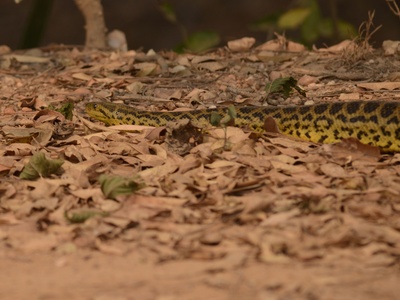
Yellow anaconda
A robust yellowish-green boa that can constrict medium-sized mammals and occasionally threaten humans. Avoid handling large wild individuals and give them space in the wild.
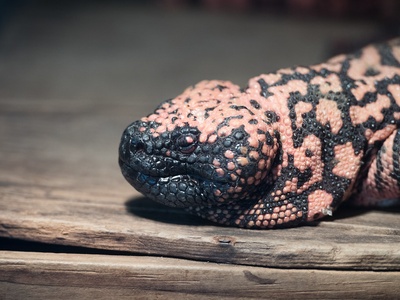
Gila monster
Chunky lizard with striking yellow-orange bead-like markings; delivers venom through grooved teeth causing severe pain and nausea. Do not handle; seek medical care for bites.
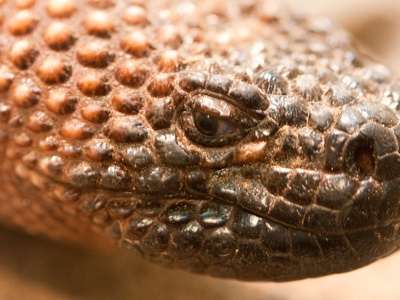
Mexican beaded lizard
Close relative of the Gila monster with yellow-orange patterning. Venomous and capable of inflicting significant bites; avoid captures and respect protected status.
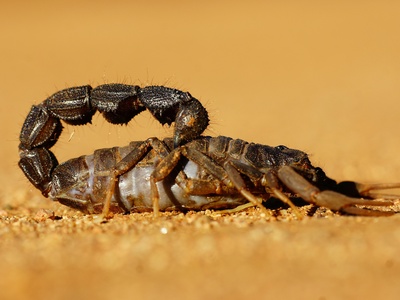
Deathstalker scorpion
Pale yellow scorpion known for extremely potent venom that risks severe pain, respiratory issues, and death in children or allergic individuals. Avoid handling and seek urgent care if stung.
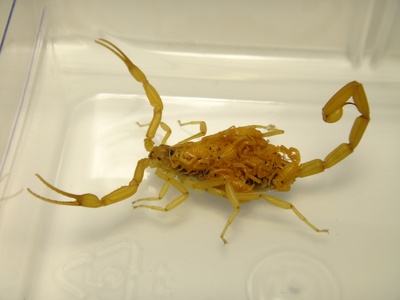
Arizona bark scorpion
Light tan/yellow nocturnal scorpion often found in homes; its sting is painful and can be dangerous to young children. Shake out clothing and seek medical attention for severe reactions.
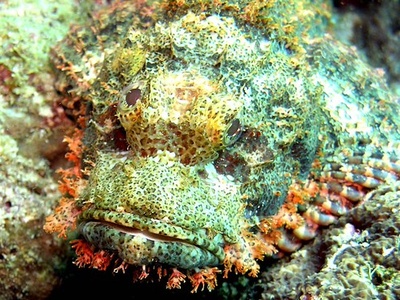
Stonefish
Well-camouflaged, often yellowish-brown, stonefish have dorsal spines with potent venom; stepping on one causes excruciating pain and possible systemic effects. Wear footwear and seek antivenom promptly.
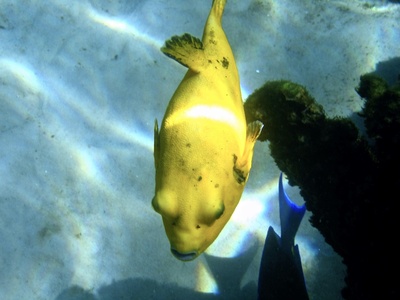
Yellow boxfish (juvenile)
Juvenile boxfish are vivid yellow and can release ostracitoxin when stressed, which kills other fish and can harm handlers. Avoid handling and never release stressed aquarium fish into natural waters.
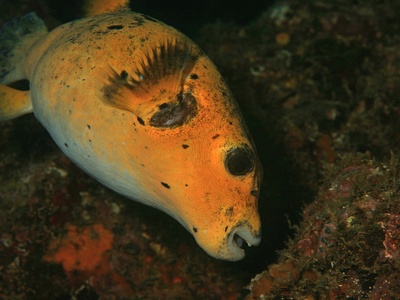
Golden puffer
Often golden-yellow in color, pufferfish carry tetrodotoxin that can be deadly if eaten improperly. Admire these fish but never consume wild puffer without trained, licensed preparation.
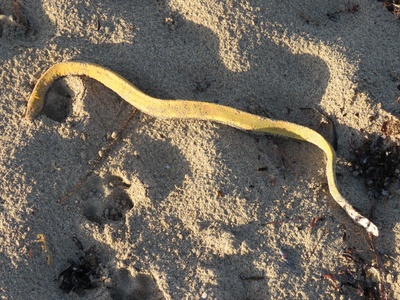
Yellow-bellied sea snake
Pelagic sea snake with a pale yellow belly; highly venomous but generally shy. Bites are rare; do not handle if caught in nets or on boats.
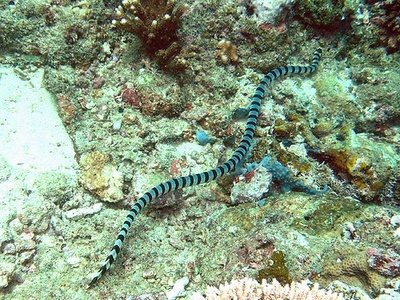
Banded sea krait
Striking black-and-white bands with a yellow head and snout; highly venomous but typically not aggressive toward humans. Leave them alone and avoid handling.
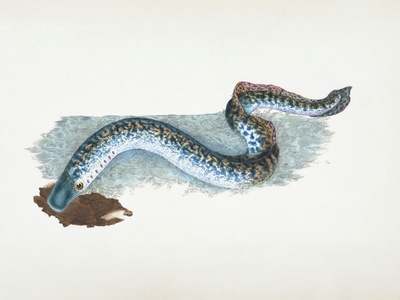
Belcher’s sea snake
Often pale yellow or cream-colored; extremely venomous despite a docile nature. Handle stranded individuals only with expert care and protective equipment.
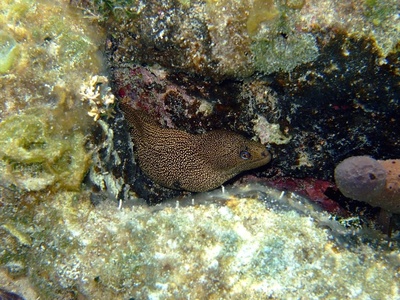
Golden moray eel
Bright yellow/golden eel that will bite if provoked or if divers stick hands into crevices; bites can be deep and prone to severe infection. Keep distance around reef holes.
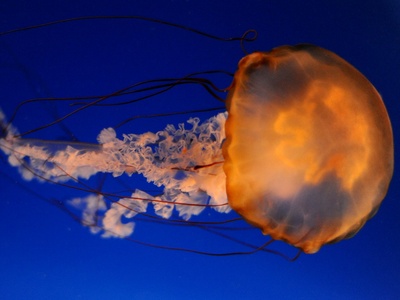
Pacific sea nettle
Large jellyfish with a yellow-brown bell and long tentacles; their stings deliver painful welts and nausea. Avoid contact and treat tentacle stings promptly.
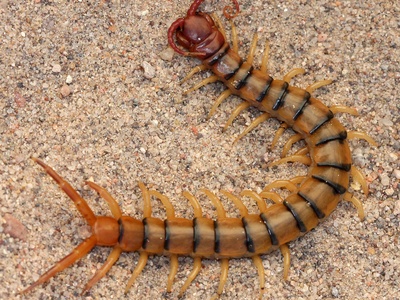
Desert centipede
Yellowish multisegmented centipede that delivers painful venomous bites; may cause significant swelling and systemic symptoms in some people. Do not handle and seek care if severe reaction occurs.
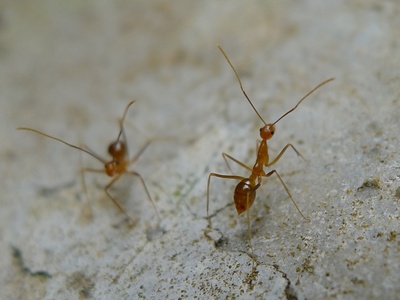
Yellow crazy ant
Small, pale yellow invasive ant that sprays formic acid and attacks wildlife in large numbers; their swarms can devastate native species and cause painful human encounters. Report infestations and avoid contact.
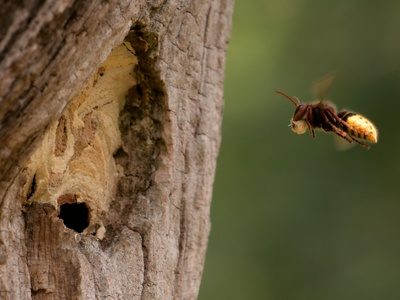
European hornet
Large hornet with yellow-brown banding that will defend nests aggressively; multiple stings can be dangerous to allergic individuals. Keep away from nests and seek professional removal.
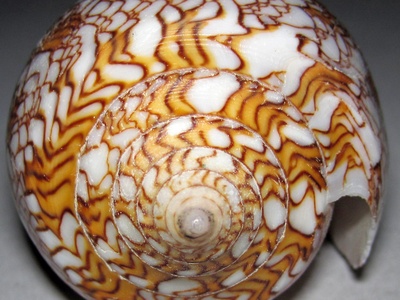
Textile cone snail
Beautiful yellow-and-brown patterned snail that delivers a harpoon-like sting with potent neurotoxins. Never pick up cone snails; fatalities have occurred from casual handling.
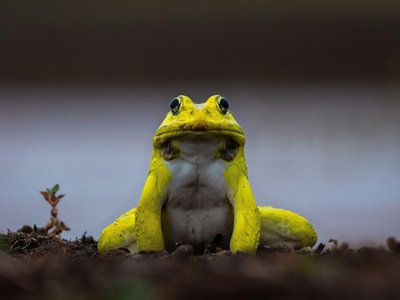
Yellow-bellied toad
Small toad with bright yellow underside used as a warning to predators; skin toxins cause irritation and gastrointestinal upset. Admire but do not handle or ingest.
